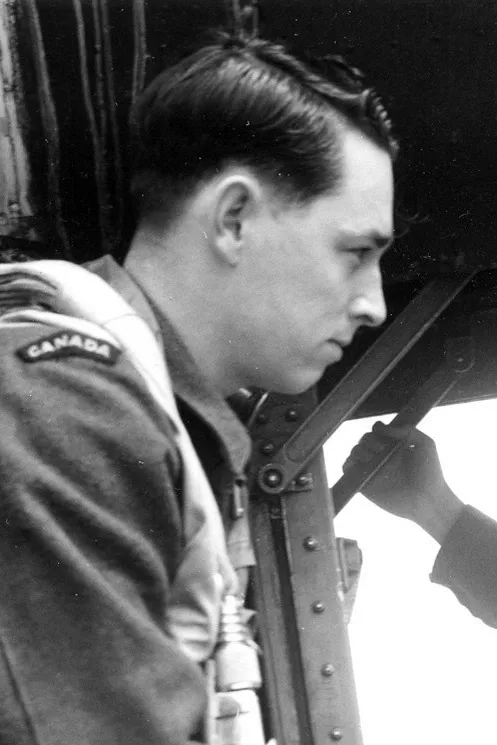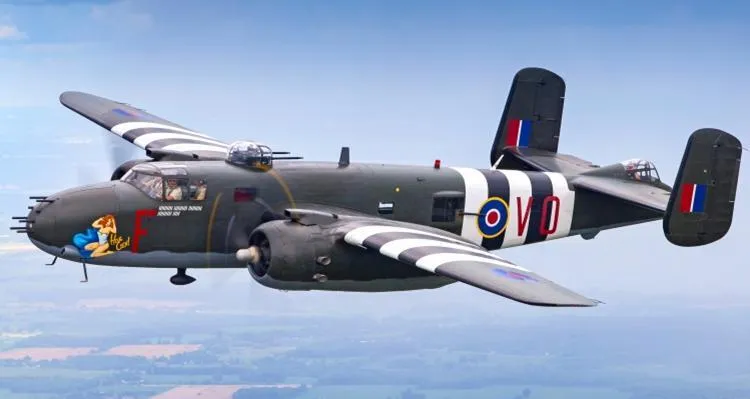Warrant Officer Henry Frank Bowmaster RCAF was part of a crew that flew their first operation with 98 Squadron RAF on 1944-07-15 in Mitchell serial FW164, squadron code VO-G. With seventeen other 98 Sqn crews, all led by W/C G.J. Christopher Paul, they were to attack an enemy strong point South of Caen but were forced by "towering cumulus up to 15,000 feet" to return without bombing. The crew were:
- Flight Sergeant Bruce L. Williams (Pilot) RAAF
- Flying Officer Tom J. Lennie (Navigator) RAAF
- Warrant Officer H. Frank Bowmaster (Wireless Operator/Air Gunner) RCAF
- Flight Sergeant Jim B.P. Roach (Air Gunner)
They flew 25 more operations against Strong points; Ammunition dumps; Petrol, oil & lube dumps; Railway marshalling yards; Gun positions; Bridges; Tank & troop concentrations; a Ferry landing and 2 Flare-dropping operations.
On 25 Sep 44 Williams, Lennie, Bowmaster and Flight Lieutenant Charles B. Carter RAFVR (in place of Roach) were shot down in Mitchell FW194 (VO-N) by Fw190s near Arnhem during Operation Market Garden. Flight Sergeant Bruce Williams and W/O Frank Bowmaster were the only ones to escape the burning Mitchell; Flying Officer Tom Lennie and Flight Lieutenant Charles Carter both died in the aircraft.
W/O Frank Bowmaster landed safely and was taken prisoner. Dutch citizen Mr. Fritz Baars witnessed Flight Sergeant Bruce Williams being shot descending in his parachute by German machine gunners protecting the Arnhem Bridge.
After Frank was reported missing, his wife, Freda, was left to wonder was he alive? Had he been killed? Captured? About four weeks later, while attending the Palace theatre in Calgary, Freda saw a newsreel of Allied prisoners receiving Red Cross parcels in a German POW camp. Frank appeared onscreen-alive!
He had been transferred to Stalag VIIIC near Sagan, Germany by train and, during a station stop, he and another prisoner jumped from the train and made a run; German guards shot Frank's partner dead and put Frank back on the train to Stalag VIIIC. His promotion to Pilot Officer came through while he was there.
After the war's end he returned to Canada and Calgary, reunited with Freda and had a son. Frank worked at Crystal Dairies, which eventually became Silverwoods, and worked his way up to Regional Manager. He took up flying as a hobby in 1974 and earned his pilot's licence. Frank died in the crash of a private plane at Irricanna, Alberta in 1979.
Flight Sergeant Bruce Llewellyn Williams, was a 21-year-old member of the Royal Australian Air Force. Flying Officer Thomas John Lennie, was 31-years old and also in the RAAF; both are interred in the Arnhem Oosterbeek War Cemetery. There is no known grave for Flight Lieutenant Charles Bindon Carter, 25 years of age and a member of the Royal Air Force Volunteer Reserve. He is honoured on the Runnymede Memorial in Surrey, England where 20,337 Commonwealth Airmen with no known graves are remembered.


